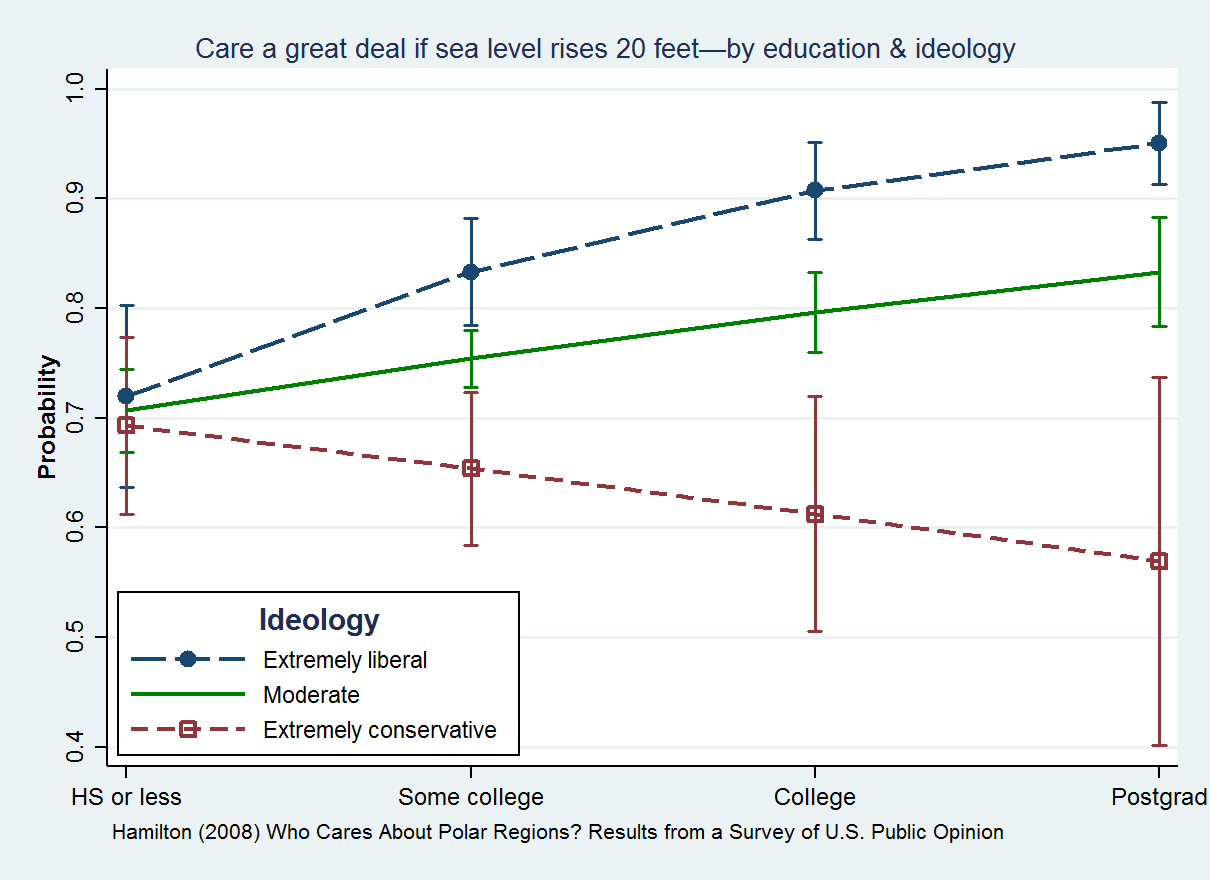|
Sparsity-of-effects Principle
In the statistical analysis of the results from factorial experiments, the sparsity-of-effects principle states that a system is usually dominated by main effects and low-order interactions. Thus it is most likely that main (single factor) effects and two-factor interactions are the most significant responses in a factorial experiment. In other words, higher order interactions such as three-factor interactions are very rare. This is sometimes referred to as the ''hierarchical ordering principle''. The sparsity-of-effects principle actually refers to the idea that only a few effects in a factorial experiment will be statistically significant. This principle is only valid on the assumption of a factor space far from a stationary point. See also * Occam's Razor * Pareto principle The Pareto principle states that for many outcomes, roughly 80% of consequences come from 20% of causes (the "vital few"). Other names for this principle are the 80/20 rule, the law of the vital few, ... [...More Info...] [...Related Items...] OR: [Wikipedia] [Google] [Baidu] |
Statistics
Statistics (from German language, German: ''wikt:Statistik#German, Statistik'', "description of a State (polity), state, a country") is the discipline that concerns the collection, organization, analysis, interpretation, and presentation of data. In applying statistics to a scientific, industrial, or social problem, it is conventional to begin with a statistical population or a statistical model to be studied. Populations can be diverse groups of people or objects such as "all people living in a country" or "every atom composing a crystal". Statistics deals with every aspect of data, including the planning of data collection in terms of the design of statistical survey, surveys and experimental design, experiments.Dodge, Y. (2006) ''The Oxford Dictionary of Statistical Terms'', Oxford University Press. When census data cannot be collected, statisticians collect data by developing specific experiment designs and survey sample (statistics), samples. Representative sampling as ... [...More Info...] [...Related Items...] OR: [Wikipedia] [Google] [Baidu] |
Factorial Experiment
In statistics, a full factorial experiment is an experiment whose design consists of two or more factors, each with discrete possible values or "levels", and whose experimental units take on all possible combinations of these levels across all such factors. A full factorial design may also be called a fully crossed design. Such an experiment allows the investigator to study the effect of each factor on the response variable, as well as the effects of interactions between factors on the response variable. For the vast majority of factorial experiments, each factor has only two levels. For example, with two factors each taking two levels, a factorial experiment would have four treatment combinations in total, and is usually called a ''2×2 factorial design''. In such a design, the interaction between the variables is often the most important. This applies even to scenarios where a main effect and an interaction is present. If the number of combinations in a full factorial design i ... [...More Info...] [...Related Items...] OR: [Wikipedia] [Google] [Baidu] |
Main Effect
In the design of experiments and analysis of variance, a main effect is the effect of an independent variable on a dependent variable averaged across the levels of any other independent variables. The term is frequently used in the context of factorial designs and regression models to distinguish main effects from interaction Interaction is action that occurs between two or more objects, with broad use in philosophy and the sciences. It may refer to: Science * Interaction hypothesis, a theory of second language acquisition * Interaction (statistics) * Interactions o ... effects. Relative to a factorial design, under an analysis of variance, a main effect test will test the hypotheses expected such as H0, the null hypothesis. Running a hypothesis for a main effect will test whether there is evidence of an effect of different treatments. However a main effect test is nonspecific and will not allow for a localization of specific mean pairwise comparisons (simple effects). A main e ... [...More Info...] [...Related Items...] OR: [Wikipedia] [Google] [Baidu] |
Interaction (statistics)
In statistics, an interaction may arise when considering the relationship among three or more variables, and describes a situation in which the effect of one causal variable on an outcome depends on the state of a second causal variable (that is, when effects of the two causes are not additive). Although commonly thought of in terms of causal relationships, the concept of an interaction can also describe non-causal associations (then also called moderation or effect modification). Interactions are often considered in the context of regression analyses or factorial experiments. The presence of interactions can have important implications for the interpretation of statistical models. If two variables of interest interact, the relationship between each of the interacting variables and a third "dependent variable" depends on the value of the other interacting variable. In practice, this makes it more difficult to predict the consequences of changing the value of a variable, particu ... [...More Info...] [...Related Items...] OR: [Wikipedia] [Google] [Baidu] |
Occam's Razor
Occam's razor, Ockham's razor, or Ocham's razor ( la, novacula Occami), also known as the principle of parsimony or the law of parsimony ( la, lex parsimoniae), is the problem-solving principle that "entities should not be multiplied beyond necessity". It is generally understood in the sense that with competing theories or explanations, the simpler one, for example a model with fewer parameters, is to be preferred. The idea is frequently attributed to English Franciscan friar William of Ockham (), a scholastic philosopher and theologian, although he never used these exact words. This philosophical razor advocates that when presented with competing hypotheses about the same prediction, one should select the solution with the fewest assumptions, and that this is not meant to be a way of choosing between hypotheses that make different predictions. Similarly, in science, Occam's razor is used as an abductive heuristic in the development of theoretical models rather than as a rigoro ... [...More Info...] [...Related Items...] OR: [Wikipedia] [Google] [Baidu] |
Pareto Principle
The Pareto principle states that for many outcomes, roughly 80% of consequences come from 20% of causes (the "vital few"). Other names for this principle are the 80/20 rule, the law of the vital few, or the principle of factor sparsity. Management consultant Joseph M. Juran developed the concept in the context of quality control and improvement after reading the works of Italian sociologist and economist Vilfredo Pareto, who wrote about the 80/20 connection while teaching at the University of Lausanne. In his first work, ''Cours d'économie politique'', Pareto showed that approximately 80% of the land in the Kingdom of Italy was owned by 20% of the population. The Pareto principle is only tangentially related to the Pareto efficiency. Mathematically, the 80/20 rule is roughly described by a power law distribution (also known as a Pareto distribution) for a particular set of parameters. Many natural phenomena distribute according to power law statistics. It is an adage of busin ... [...More Info...] [...Related Items...] OR: [Wikipedia] [Google] [Baidu] |
Design Of Experiments
The design of experiments (DOE, DOX, or experimental design) is the design of any task that aims to describe and explain the variation of information under conditions that are hypothesized to reflect the variation. The term is generally associated with experiments in which the design introduces conditions that directly affect the variation, but may also refer to the design of quasi-experiments, in which natural conditions that influence the variation are selected for observation. In its simplest form, an experiment aims at predicting the outcome by introducing a change of the preconditions, which is represented by one or more independent variables, also referred to as "input variables" or "predictor variables." The change in one or more independent variables is generally hypothesized to result in a change in one or more dependent variables, also referred to as "output variables" or "response variables." The experimental design may also identify control variables that must be h ... [...More Info...] [...Related Items...] OR: [Wikipedia] [Google] [Baidu] |




